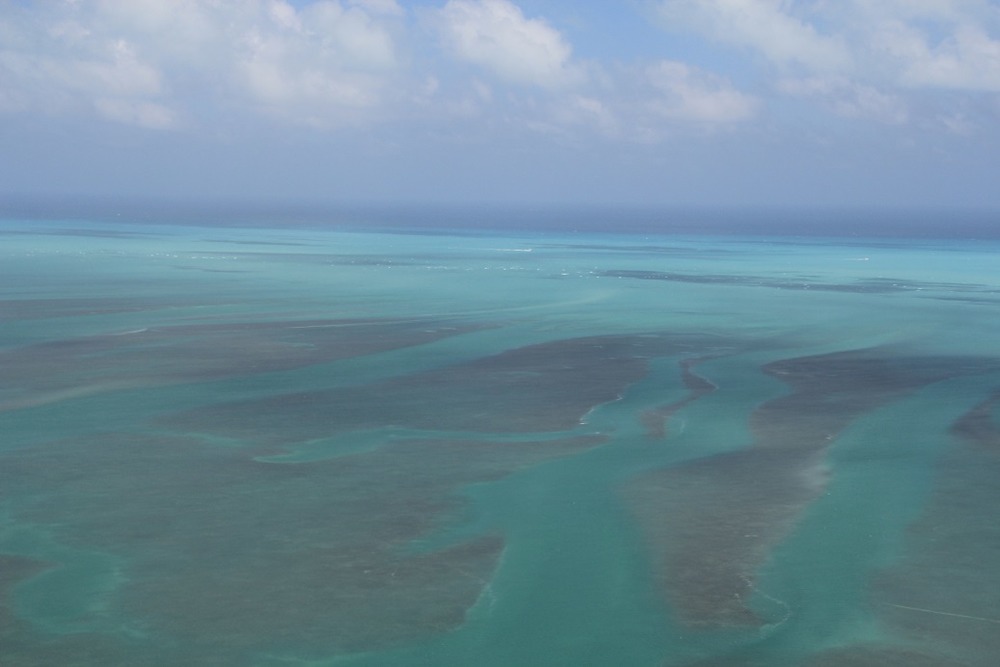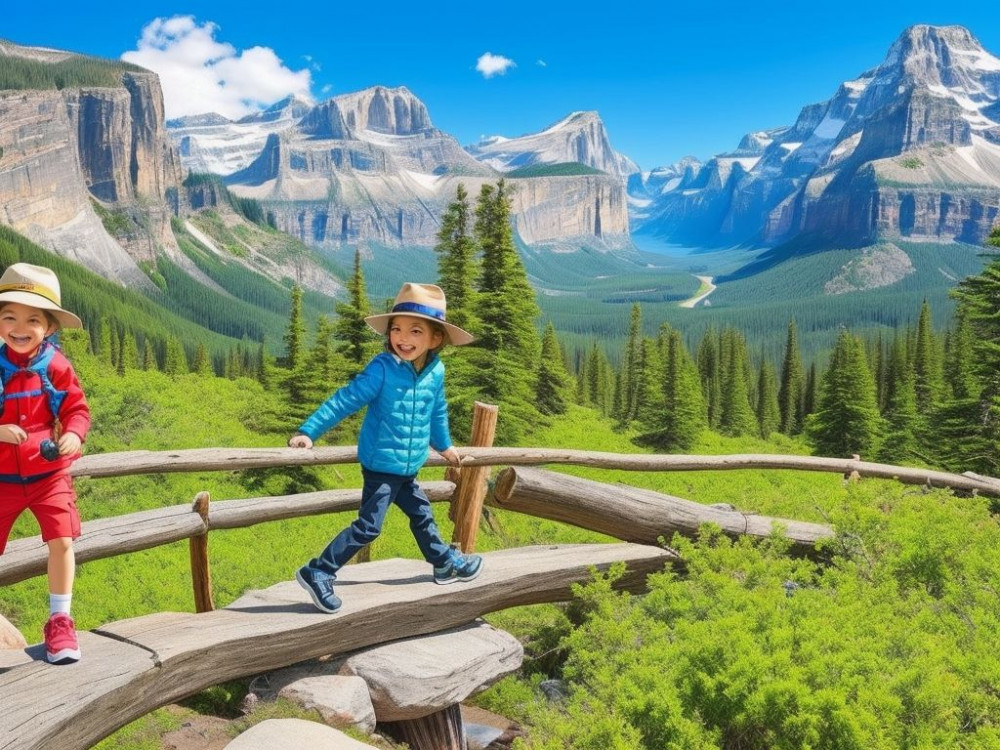Do you crave a journey of exploration to a national park? Biscayne National Park awaits! Its unparalleled beauty and diverse wildlife make it an ideal destination for outdoor lovers. Here, you can find amazing adventures and discover unforgettable memories. Make this park your next getaway!
Introduction
Biscayne National Park is a paradise in southern Florida, with pristine waters and diverse marine life. 173,000 acres of protected lands and waters make it the largest marine park in the National Park System.
From coral reefs to sunken shipwrecks, it’s a great place to snorkel and scuba dive. Fish, turtles, manatees, dolphins – you’ll find them all here! Plus, the area has a fascinating history, from Native Americans to Spanish explorers.
Industrialization threatened Biscayne Bay in the early 20th century, but citizens fought to protect it. It became a national monument in 1968 and a national park in 1980. Now it’s an important reminder of conservation efforts, and a top destination for adventurers around the world.
Can’t find Biscayne National Park on the map? Just follow the trail of sunscreen bottles and flip-flops! Discover the wonders that await you today.
Location and History
Biscayne National Park is an amazing destination! It lies in southern Florida, covering 173,000 acres. Here, the land meets the sea, creating a unique ecosystem both above and below the water.
Established on June 28, 1980, this park preserves Miami’s coral reef and nearby islands.
The park boasts an interesting history, too. Ancient tribes like the Tequesta lived here, plus it was explored by Spanish adventurers. During Prohibition, the park’s islands became hideouts for rum smugglers. This fascinating past adds to the park’s enchanting atmosphere.
The park also has important ecological value. Its waters are home to stunning coral reefs and hundreds of species of fish. Plus, sea turtles live here, too. Visitors can go snorkeling or scuba diving to explore this underwater paradise.
To me, Biscayne National Park is a place of awe and wonder. Dolphins swimming in the crystal-clear waters and the opportunity to uncover hidden stories make this park a must-see destination. A visit here will create lasting memories and deepen your appreciation for the beauty of nature.
Geography
Biscayne National Park – a picturesque marvel – is renowned for its beguiling geography. Let’s take a look at this natural wonder!
The Geography of Biscayne National Park is characterized by the following features, as seen in the table:
Park Information
| Feature | Measurements |
|---|---|
| Area | 172,971 acres (70,111 ha) |
| Water | 95% of the park’s total area |
| Islands | 44 islands in total |
| Coral Reefs | 10 miles (16 km) long |
These stats give us a glimpse of the beauty of this park, but it also holds rare features that are not seen anywhere else. This underwater paradise is home to vibrant coral reefs – alive with an abundance of marine life. Visitors have the chance to experience this unique ecosystem and make memories that will last a lifetime.
Exploring further, one finds a story of the beauty and fragility of Biscayne National Park. A group of divers found an endangered species called the Smalltooth Sawfish during their expedition. Seeing this majestic creature glide through the depths left them in awe and thankful for the efforts to protect such habitats.
This park continues to enthral visitors with its impressive geography and untouched natural wonders. Its charm lies in its sheer size and the ability to connect us with our planet’s remarkable biodiversity. And if you think Miami is hot – wait until you experience the heat of Biscayne National Park’s climate. It’s like a natural sauna, with wildlife!
Climate
Biscayne National Park boasts a unique climate, with warm temperatures, sun-filled days and occasional rain showers that add to its charm. Its subtropical atmosphere makes it an ideal spot for outdoor fun year-round.
The park has two seasons: wet and dry. May to October is the wet season, when more rain falls, bringing life to the park’s vegetation. Visitors can enjoy the beauty of nature in full bloom during this time.
November to April is the dry season, with less rain and drier conditions overall. But this does not take away from the park’s appeal as visitors can still enjoy comfortable temperatures and clear skies. Plus, the reduced rain leads to better visibility in Biscayne Bay’s crystal-clear waters – perfect for snorkeling and diving.
Fun fact: Biscayne National Park covers 172,971 acres of land and water along the southeastern coast of Florida (National Park Service). From dazzling coral to elusive manatees, the park’s flora and fauna provide a daily show that could give the Kardashians a run for their money.
Flora and Fauna
Biscayne National Park is a paradise for nature lovers! It’s full of diverse plants and animals. Some of the notable species include Saw Palmetto, Buttonwood, Seagrass, Red Mangrove, Manatees, Hawksbill Turtles, Great Blue Herons, and American Crocodiles. Plus, there are many more species that add to the park’s incredible biodiversity.
You can find sea turtles nesting along the shore, as well as unique mangrove ecosystems. To make the most of your experience, bring binoculars and a field guide – Who needs a therapist when you can just get lost in the mesmerizing underwater world of Biscayne National Park and forget all your problems?
Ecosystem
Biscayne National Park – a diverse natural haven, teeming with life! Its rich biodiversity has vibrant coral reefs, mangrove forests and seagrass beds. The table below dives into the park’s distinct components.
Marine Habitats
| Habitat | Description |
|---|---|
| Coral Reefs | Home to many fish and coral formations. |
| Mangrove Forests | A nursery for marine species, protecting them. |
| Seagrass Beds | Providing food and shelter for marine organisms. |
Plus, sandbars are part of Biscayne’s special ecosystem. They’re nesting grounds for shorebirds and refuge for species during low tide.
We need to conserve Biscayne’s ecosystem. Strict fishing regulations can help maintain aquatic populations and protect species. Educating visitors about eco-friendly practices like not disturbing wildlife or leaving trash behind creates a culture of environmental consciousness. These efforts support ecological longevity, preserving the park’s remarkable ecosystem for future generations.
Conservation is key, but nothing beats pretending you’re in a shark-infested underwater Jurassic Park at Biscayne National Park!
Conservation
Conserving Biscayne National Park includes protecting and preserving its unique natural and cultural resources. To do this, there are Marine Protected Areas, Restoration Projects, and Wildlife Monitoring. This park is also home to some endangered species, like the West Indian manatee. It is essential to have conservation in the park for the varied marine life. So, if you’re looking for an adventure, come and explore Biscayne National Park! (Source: National Park Service).
Recreation
Escape reality and dive into Biscayne National Park! Here, you can snorkel and scuba dive in its crystal-clear waters and explore its mangrove forests. Snorkelers can enjoy the shallow areas, while scuba divers can venture deeper for a more immersive experience.
For those who prefer to stay above water, Biscayne Bay is perfect for boating and fishing. Kayaking or paddleboarding is ideal in its calm waters, and fishing enthusiasts can try their luck in catching tarpon and snapper.
Hiking and wildlife spotting are also activities available. Trails wind through the park’s diverse ecosystems, providing glimpses of rare birds, reptiles, and mammals.
Biscayne National Park was established in 1980 after years of conservation efforts by local communities and environmental activists. Visitors can embrace this legacy by immersing themselves in the park’s recreational activities and appreciating its natural wonders.
Tourism
Biscayne National Park is an awe-inspiring destination that draws travelers from everywhere. Its pristine waters, rich coral reefs, and diverse sea life make it a snorkeler and diver’s paradise. There are guided tours and boat trips that let visitors explore the park up close.
Snorkeling and diving in the clear water are prime activities. The coral reef system here is home to many types of fish, turtles, and other aquatic animals. Snorkelers can drift through the shallow depths and catch a glimpse of this underwater world, and deep-sea divers can find hidden gems below the surface.
For those who prefer to stay on land, there is still plenty to do. Walking trails give incredible views of the blue waters and verdant vegetation. You can enjoy kayaking or paddleboarding and be closer to nature while admiring the mangrove forests along the coastline.
In addition to its beauty, Biscayne National Park has a rich history too. There are historic sites preserved here, such as shipwrecks that have become artificial reefs over time. Exploring these wrecks provides a unique look into the past and reveals the park’s natural and historical significance.
Pro Tip: Don’t miss the sunset at Biscayne National Park! The gold rays bouncing off the water create a truly spellbinding atmosphere. Capture this moment with your camera.
In conclusion, Biscayne National Park has something for everyone, from snorkeling in colorful coral reefs to uncovering historic shipwrecks. With its stunning scenery and abundant cultural interests, it’s the perfect spot for a memorable adventure. Who needs a crystal ball when you can visit Biscayne National Park and get a glimpse of the future of marine conservation?
Future
Biscayne National Park is ready to take on the future with its focus on conservation and protection. Strategies and partnerships are in place to protect the special ecosystem and offer visitors an enjoyable experience.
The park is aiming to achieve a balance between preserving nature and allowing visitors to enjoy its beauty. Regulations and guidelines are set to make sure human activities do not harm the environment.
Educational programs are being developed to teach people about environmental stewardship and how to be responsible.
Visiting Biscayne National Park is an amazing way to experience its wonders. From coral reefs to secret islands, it is a marine paradise.
We must remember our responsibility to protect Biscayne National Park for future generations. Let’s join together and keep its legacy alive!
FAQ
What is Biscayne National Park?
Biscayne National Park is a national park located in southern Florida, encompassing Biscayne Bay and its surrounding coral reefs, islands, and shoreline.
What activities can I do at Biscayne National Park?
Visitors can enjoy various activities at Biscayne National Park, including snorkeling, scuba diving, boating, fishing, camping, wildlife watching, and guided tours.
Are there any camping facilities in Biscayne National Park?
Yes, Biscayne National Park offers primitive camping facilities on several of its islands. However, advance reservations are required, and amenities are limited.
Can I bring my pets to Biscayne National Park?
No, pets are not allowed in Biscayne National Park to protect the park’s wildlife, habitats, and other visitors.
How can I reach Biscayne National Park?
The park is accessible by boat, kayak, or guided tour from various marinas in the Miami area. There is no road access to the park.
What is the best time to visit Biscayne National Park?
The best time to visit Biscayne National Park is during the dry season from November to May when the weather is pleasant, and water visibility is optimal for snorkeling and diving.




Leave a Reply